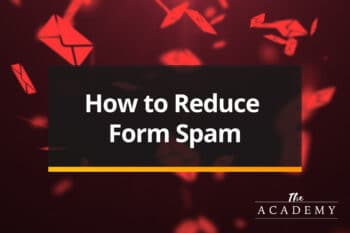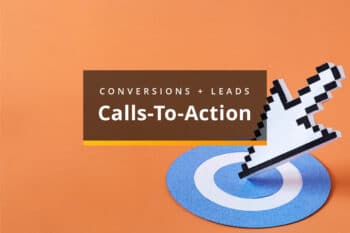People love Apple’s products. Why? Because they’re beautiful and blissfully easy to use. There’s really not much more to it than that. Of course the computer offers us a lot of tools do get things done, entertainment and other diversions, but at the core, I own an Apple computer because it’s sleek, attractive and it allows me to do what I do with minimal effort. I simply enjoy using it.
How does this idea apply to web design?
It’s pretty simple in my mind. We want our website visitors to have this exact same experience. Yet, many sites miss the mark. Why? Well the reasons are endless but in my experience it usually has something to do with budget, bad hiring decisions or the person designing the site simply doesn’t know what it takes to design an effective website. They’re a designer, not a web designer and there’s a difference. Sure, they know how to create glossy buttons and create HTML, but do they know how to make the website WORK for the client?
Here are a few reasons why the design of your website is important to your digital marketing, and why you should invest in an experienced designer that understands the principles of strategic planning, visual communication, website conversion and ultimately knows when to ask themselves “why” they’re making decisions when they put mouse to screen.
First Impressions Matter
Nothing is more important than a first impression. It really can make or break your success on the internet. How many times have you arrived at a site and negative thoughts immediately pop into your mind? Maybe it’s the color choices, maybe it’s the organization of the information, maybe it’s a lack of whitespace, maybe there’s too much color, maybe it’s simply their cheesy logo that looks as if they hired their cousin the dump truck driver to design it. Whatever it is, knowing what makes design effective is critical to making that all important first impression.
People should want to be there and come back often
Have you ever used a product that did a job but also made you feel good in some way? Maybe a shirt that fit you just right or shoes that looked so cool that they made you want to wear them all the time. Have you ever walked into a room and simply felt comfortable and relaxed? How about the opposite feeling?
Using the Apple example again, the computers are built to be comfortable. They’re designed to visually stimulate you. They’re designed to make your life easy. You WANT to use them because the overall experience is great.
These feelings come from design decisions — very subtle, but important design decisions — and this thinking should be applied to your website.
Below are two examples that show two blogs. They were both developed for the same purpose (to deliver information) and they have many of the same elements (navigation, actionable items, text on the page, links, images). But for me, only one will make me want to be there and come back on a regular basis. It’s like that room that you just love sitting in. Your website should make people want to interact with you. It should be easy and enjoyable. It should make them want to be there. (Click the image to enlarge)
A sense of quality and trust
I’m sure you’ve been to websites before that just had a sense that the business was fly-by-night. The impression that you make online says a lot about you. It’s sad to say but it’s kinda like that old example where you have two choices for a lawyer. One drives up in a Mercedes and one drives up in a Ford. Which one will you choose to represent you if all other things were equal?
Your website should accomplish the same thing when a visitor arrives at the homepage. It should instill a sense of quality, success, trust and the fact that you know what you’re doing.
Clear Communication
Using the examples above, which one do you feel communicates the best? How fast can you digest the actionable elements on the page and how to navigate the site? How quickly can you pick out the social, navigation, content and contact information on each? What do you see first? Effective design considers these important factors and it involves color choices, fonts, white space, size and consistency. One is simply more effective because the designer knew how to communicate.
Clear Navigation
How do you know how to enter a door or open a window? The reasons are obvious but when you get right down to it, you know how to open a door because it offers one clear and obvious choice. Your website navigation should follow the same idea.
Navigation should be just as simple and clear. If you want someone to contact you, have one clear link on the page that says “Contact Us”. If you want them to view your services, don’t give them 5 different ways on the page to get there. This adds clutter, confusion, “static” and it shows that you don’t TRUST the design decisions that you’ve made. Even the good design example above makes this mistake. Why would it need to say “Contact” in the navigation and the sidebar? It’s because they simply don’t trust that their navigation will get the job done and that’s where things start to get messy and go down hill.
My simple rule: Simplify, simplify, simplify and TRUST your decisions. If you feel like someone might miss something and therefore need an additional promo or link somewhere on the page, then you should rethink your first decision and make it more effective.
Design is visual communication & persuasion
Effective website design is more than a pretty layout, glossy buttons, drop shadows, designer tricks and fancy fonts. Design is about visual communication. It’s about accomplishing a set of objectives and communicating something effectively.
When you’re laying out a page, always ask yourself “why” you’re making decisions. I believe that there should always be an answer to “why” that goes beyond “because I like it”.
Here are some questions to consider when making or commenting on design decisions:
- Decide what you want them to do first, second, third. Understand the hierarchy of your information on the page. Ultimately a page should be designed to accomplish an objective. Why are things placed on the page where they are? Top navigation, sidebar navigation, sidebar on the right or left, contact button in the navigation or called out somewhere else? The questions are endless and you should always ask yourself “why” when you place something on the page.
- What incentives do you give them to contact, subscribe, download or buy and can they easily find these incentives at a glance? How do they quickly find pricing or understand how to take action?
- How easy is the page to read and scan for information? Can the visitor digest the gist of the page within 15 seconds or does it take 5 minutes to read?
- After they read and digest the information on the page, how can they find more/similar information? How do you design the page to keep them reading?
- How quickly can they pick out the ways to connect with you and share on social media? How important is social media in your marketing strategy and how prominently are the elements placed on the page? Why would you make your Twitter button a huge icon at the top of your page if you plan to tweet once every 3 months?
- Why do you choose a font? Why do you choose a size and weight? Why do you choose a color? (Hint: Contrast is king when reading and calling out information on the page!)
- Why are you choosing a certain color scheme? Is it because you think it’s pretty or because it accomplishes an objective?
- Why does something have to look like a button? Should it? If you answer yes, are you doing this out of habit or because it’s a popular design trick or because it’s the most effective way to accomplish your objective.
- Is more color effective or should you continually push for less? Why is the background color of your site yellow and the text brown? Is there a reason for this or are just trying to add color? Why would this be more effective and easy to read than a dark, clean, large font on white? Boring you say? Effective I say.
Summary/Conclusion:
In summary, effective website design is important and it’s a complex dance of style, communication, business objectives and your likes and dislikes. In the end you should know that design is important. It’s more than making something “pretty” or “cool”. It’s your online brand image. It communicates with your customers visually and immediately. If your design is not effective, ultimately you will not be effective and successful online.
Most Popular Articles

Seeing Favicons in Your Google Search Results? Here’s Why…
Have you noticed anything different in your Google Search results lately? Google added tiny favicon icons to its organic search results in January. It was…

Business Growth and Digital Marketing News & Tips 4-14-24
Did you know? It’s five to twenty-five times more expensive to acquire a new customer than to retain an existing one. Increasing customer retention by…

Business Growth and Digital Marketing News & Tips 3-28-24
With the desire for precise measurement tools to determine ROI, there has been a rise in attention metrics. These metrics, which often utilize eye-tracking data,…








